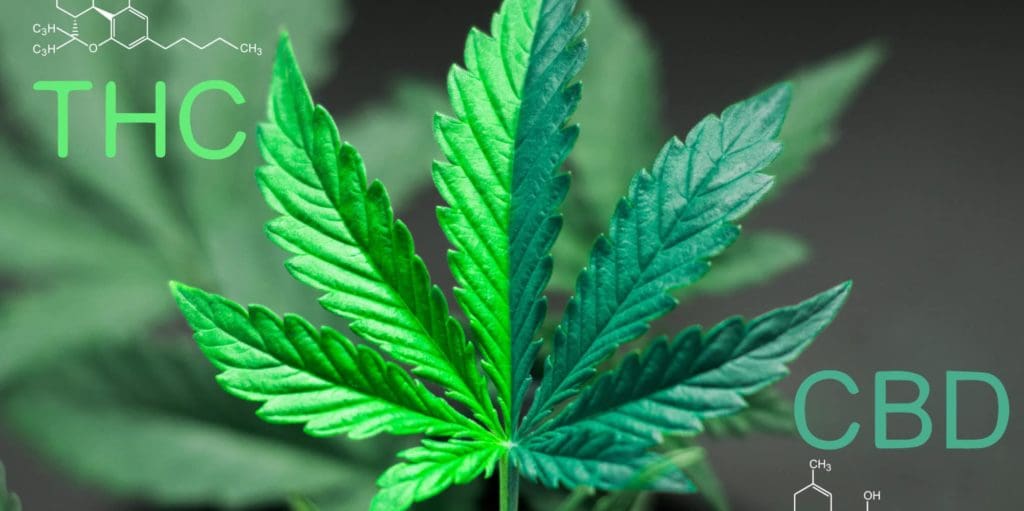CBD vs THC for Pain Overview
With the relaxation of cannabis laws in many parts of the country, people with all types of pain have started adding marijuana products into their pain management plans. In fact, CBD and THC, two of the most popular natural compounds from the plant, have been floated around as viable pain reliever alternatives to NSAIDs and opioids. One study even showed that out of almost 3000 patients who used medical marijuana, 97% were able to decrease their opioid use. If you are interested in adding one of these products into your treatment plan, you might be wondering which compound works best for your pain. In this guide, we will cover CBD vs THC for pain management and provide details to help you narrow down your search.
The Difference Between CBD and THC
There are over 500 distinct compounds in the cannabis plant, at least 100 of which are classified as cannabinoids. These chemical compounds act on cannabinoid receptors throughout the body. Both cannabidiol (CBD) and tetrahydrocannabinol (THC) have the same chemical formula, but because they have different arrangements of atoms, produce vastly different effects.
The two compounds interact with the endocannabinoid system. While they operate within the same system, they react differently to the receptors in your brain, which release neurotransmitters in the brain. These neurotransmitters are responsible for communicating signals of pain, mood, sleep, memory, and more.
CBD
CBD is non-psychoactive, meaning it does not produce a “high” feeling when you ingest it. In most cases, CBD is extracted from the hemp plant, although it can also be derived from a cannabis plant as well. Hemp, which is used in a variety of goods, only contains .3% THC. According to federal law, CBD can only have .3% THC to be considered legal.
You can find CBD in many different forms including, although CBD oil may be the most popular. Other forms include:
- Edibles, like gummies and supplements
- Tinctures
- Capsules
- Water
- Lotion/creams
While many people use CBD products to reduce chronic pain, most of the evidence surrounding its effectiveness is anecdotal. However, scientific studies continue to proliferate, so it’s possible that in a few years we will have more proof of its effectiveness through a variety of clinical trials.
CBD may be most known for its anti-inflammatory effects, which can relieve arthritis pain, but it can also help treat:
- Inflammatory bowel disease (IBD), Crohn’s disease
- Nausea, migraines, and seizures
- Depression and anxiety
- Diabetes
- Multiple sclerosis
CBD is generally safe to take in large quantities. If you do feel any side effects, it probably has more to do with CBD interacting with other drugs in your system than the compound being directly harmful.
THC
THC, on the other hand, produces psychoactive effects, including altered states of mood and perception. It is the main psychoactive drug in cannabis products.
It can help treat:
- Pain, including nerve and cancer pain
- Muscle spasticity
- Glaucoma
- Insomnia, low appetite, and nausea
- Anxiety and PTSD
- Parkinson’s disease
When you ingest THC, you might find some temporary side effects in addition to the high you get. Side effects of THC include:
- Increased heart rate
- Coordination problems
- Dry mouth
- Red eyes
- Slower reaction times
- Memory loss
- Hunger
Most people choose to smoke THC, but it does come in other forms. For example, you can find it in edibles, sprays, tinctures, and capsules.
THC is not recommended for teenagers. Some studies have shown long-term use can increase susceptibility for developing mental health issues, including schizophrenia.
The Entourage Effect
You don’t have to choose between CBD and THC products. Although you certainly can, there are many benefits to using both compounds. This is due to the entourage effect.
According to the entourage effect, all the different compounds in cannabis work together better than they would separately. The 500+ compounds in marijuana work synergistically, helping to buoy the effects. In addition to cannabinoids like CBD and THC, you can find phytocannabinoids, terpenes, and flavonoids the plants.
In fact, most of the studies that examine the effects of marijuana use a combination of THC and CBD on their subjects. Taking into consideration the whole plant instead of one compound indeed may make a difference.
Full Spectrum Vs. Isolates
Many CBD and THC products are sold as “isolates”, meaning they only contain one pure compound. However, full-spectrum products, which contain all cannabinoids, can potentially help enhance the efficacy of the treatment. Because full-spectrum products contain so many compounds, it can sometimes be difficult to predict their effects. Because of this, some people favor isolates.
For example, the presence of CBD can help tamp down the high feelings you get from THC, and may even extend the half life of THC, making the pain relief last longer. You may find that you get the most relief from a strain that contains a high amount of both CBD and THC and a high CBD:THC ratio. Or you may prefer a strain that contains less THC. In this case, you may benefit from a high CBD, low THC strain. If you want to keep a clear head, a higher amount of CBD is best.
Where to Start
When choosing to use medical marijuana, either through CBD, THC, or a combination, you will probably have to experiment. Start by choosing one product and using it at its lowest dose. Make sure to take 2-3 doses per day for at least 3 days and take notes on how you feel. Slowly increase your dose until you find what works for you.
Or, if you find no relief from the product, don’t give up! You can try a different strain, compound, potency, or blend. And remember, what works for you may not work in other people. The same product may produce different effects in someone else.
